Acromyrmex versicolor (Leafcutter Ants) and Asagena (Steatoda) Spider
Watching Leafcutter Ants react to Asagena (Steatoda) Spider predation in Central Arizona
On March 23 of 2003, I was to the west of Phoenix, Arizona in the Estrella Mountains. On this fine day, I’d already seen Euryopis spiders preying on native Fire Ants. So I was thrilled to see more spider predation on the same trip.
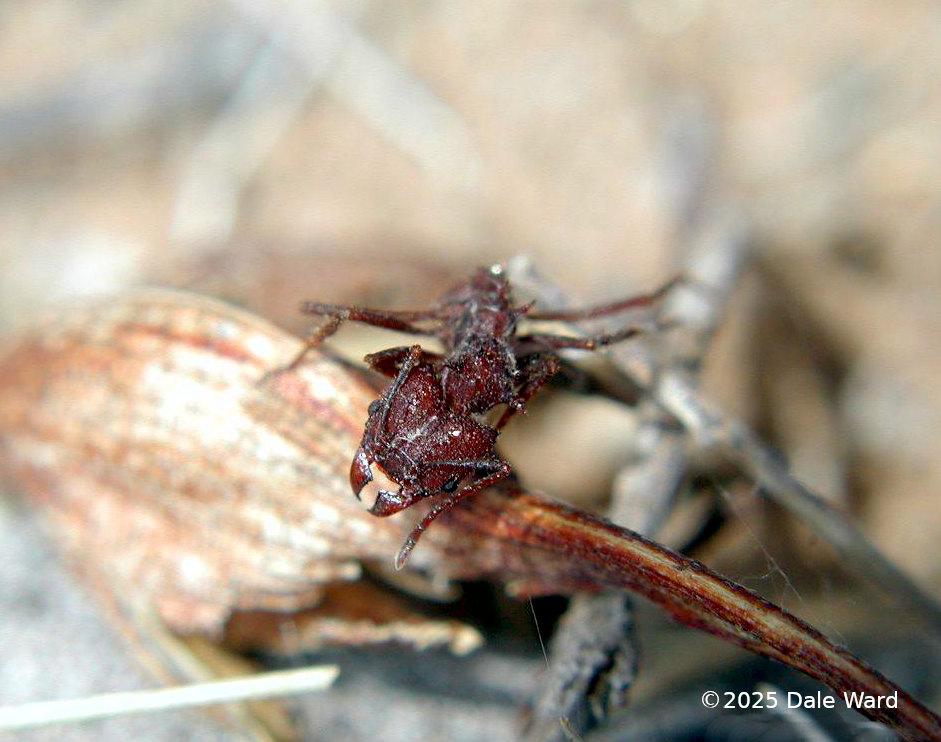 The Acromyrmex versicolor (Leafcutter Ant) worker had webs draped over her, and was moving in a slow, palsied manner.
The Acromyrmex versicolor (Leafcutter Ant) worker had webs draped over her, and was moving in a slow, palsied manner.
I was watching Acromyrmex versicolor, a desert Leafcutter Ant, foraging when I noticed one worker ant that was behaving strangely. It was on a twig on the ground, and was moving in a very slow, palsied manner, and was draped with webbing.
As I watched, a male spider came darted over to the Leafcutter bit the ant.
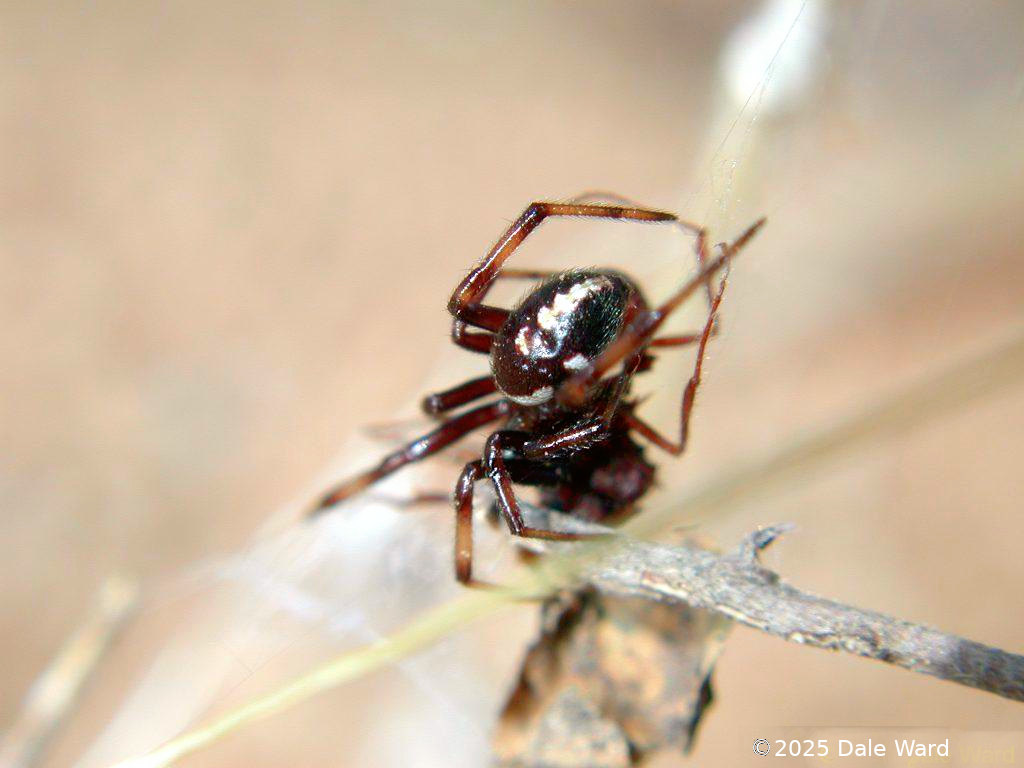 Asagena Spider bites Acromyrmex versicolor (Leafcutter Ant)
Asagena Spider bites Acromyrmex versicolor (Leafcutter Ant)
At the time, I thought this was a Euryopis spider, since I had just seen some in a nearby cactus. Now, looking back on the photos, I suspect that this is a different spider - an spider in the genus Asagena (previously Steatoda). Probably a spider in the fulva group - I (very tentatively) think this is Asagena pulcher.
This was an absolutely fascinating encounter.
After re-biting the ant, the spider darted away. The ant continued to move in the slow, jerky manner that had initially attracted my attention. When her mandibles would contact a twig, she’d bite, but there seemed to be little coordination to the ant’s movements. The ant was also missing both her right front leg and a portion of her left front leg. I don’t know if those injuries were caused by the spider, or if the ant was already injured.
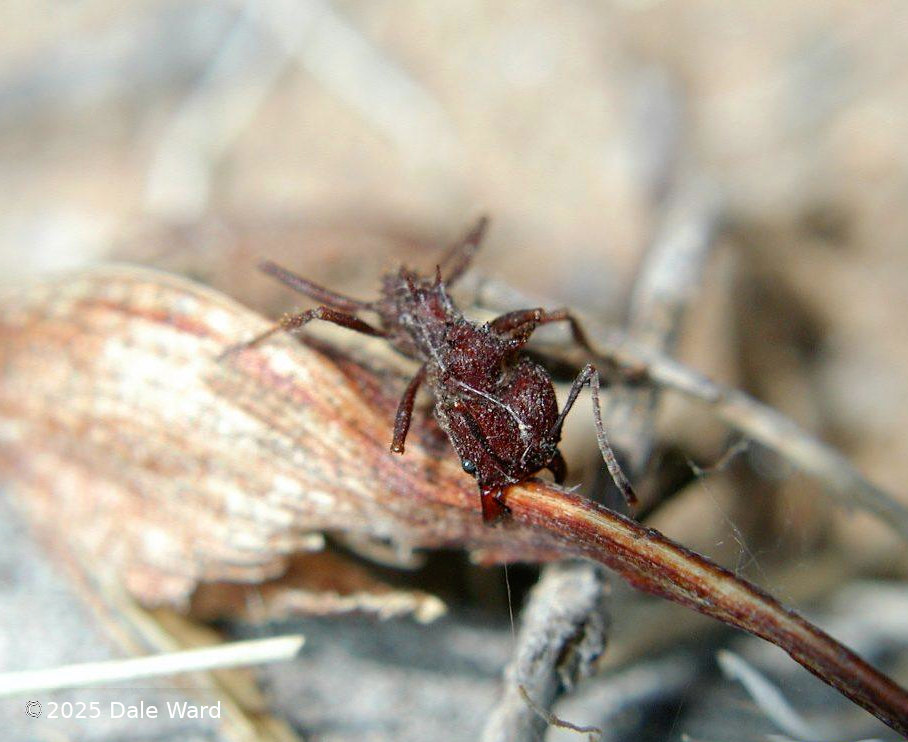 The Leafcutter worker would bite at the stem of a leaf occasionally, when her movements happened to bring the stem between her mandibles.
The Leafcutter worker would bite at the stem of a leaf occasionally, when her movements happened to bring the stem between her mandibles.
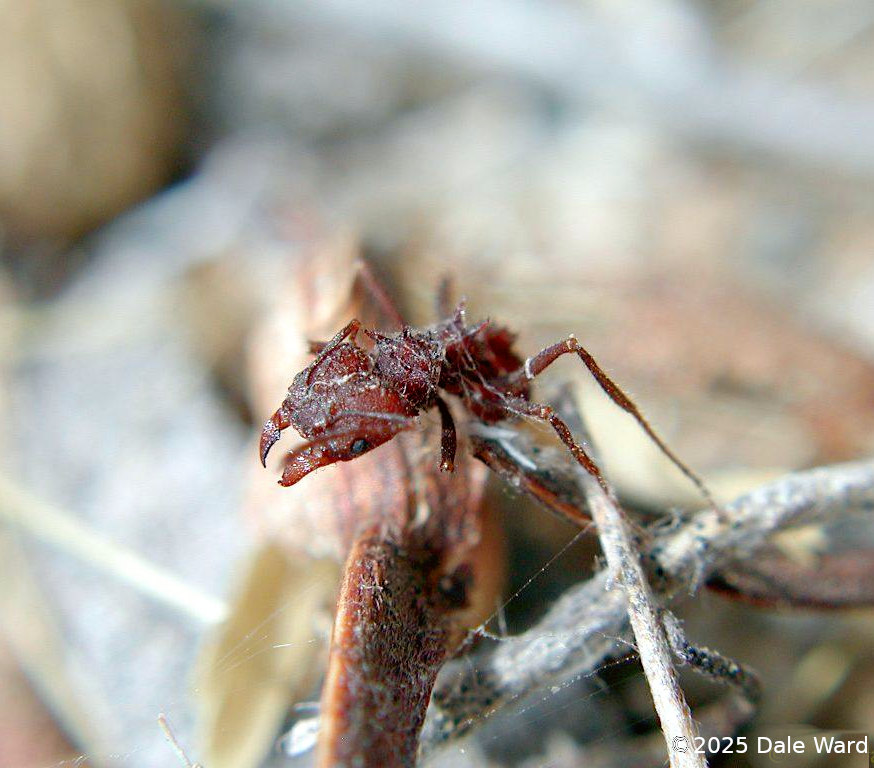 The Leafcutter was also missing a section of her front leg. I’m guessing this happened before the spider-entrapment.
The Leafcutter was also missing a section of her front leg. I’m guessing this happened before the spider-entrapment.
The spider eventually returned and began to wrap the ant in web. I’m assuming that I happened upon this incident early in the process, and that the spider had waited for the venom to take effect before he could safely wrap the ant.
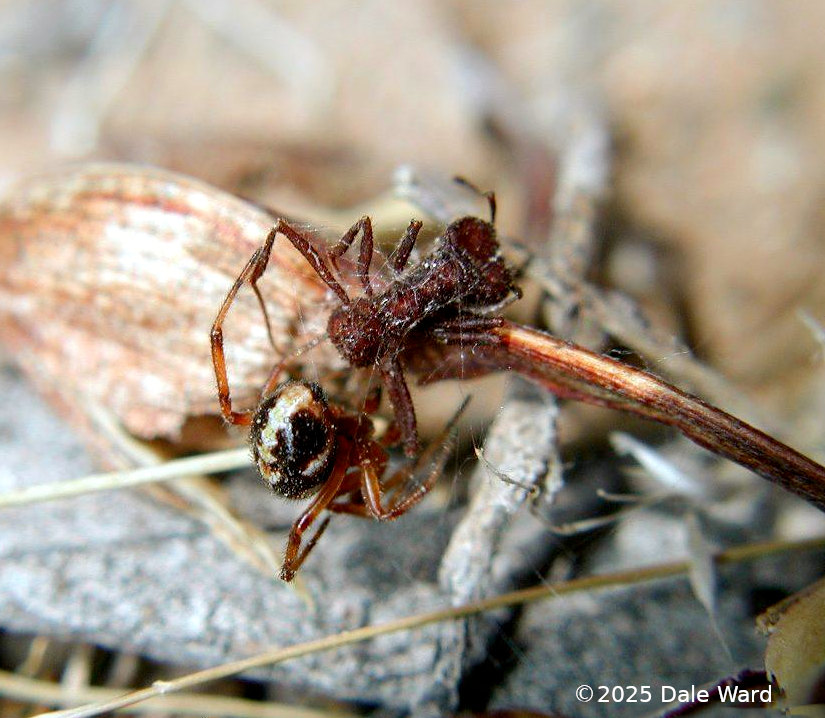 The Asagena spider, a male (see the enlarged pedipalps, near his head?) spun more web over the Leafcutter Ant.
The Asagena spider, a male (see the enlarged pedipalps, near his head?) spun more web over the Leafcutter Ant.
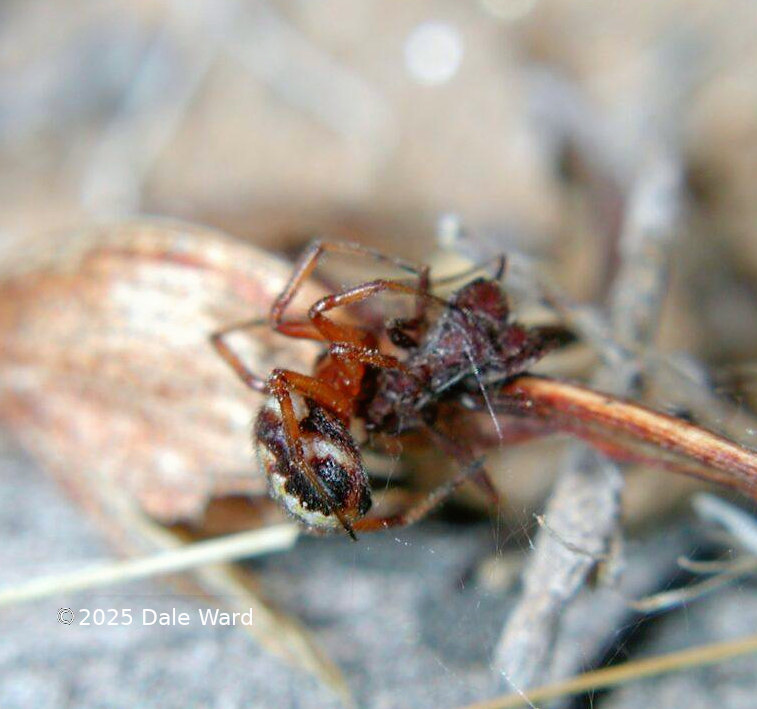 After adding more webbing to the ant, the spider moved his mouth closer to the ant. I think he’s either envenomating the spider again, or beginning to feed. It looks like he’s biting at a leg joint, though I can’t tell for sure.
After adding more webbing to the ant, the spider moved his mouth closer to the ant. I think he’s either envenomating the spider again, or beginning to feed. It looks like he’s biting at a leg joint, though I can’t tell for sure.
The spider would occasionally crawl away from the ant even after the re-wrapping. In the photo below, he’s on a nearby piece of wood. He’s curled up as though guarding himself, though I hadn’t intentionally disturbed him. An odd thing about this spider - he has the robust abdomen and general shape of a female spider. I would just catch glimpses of enlarged pedipalps, though.
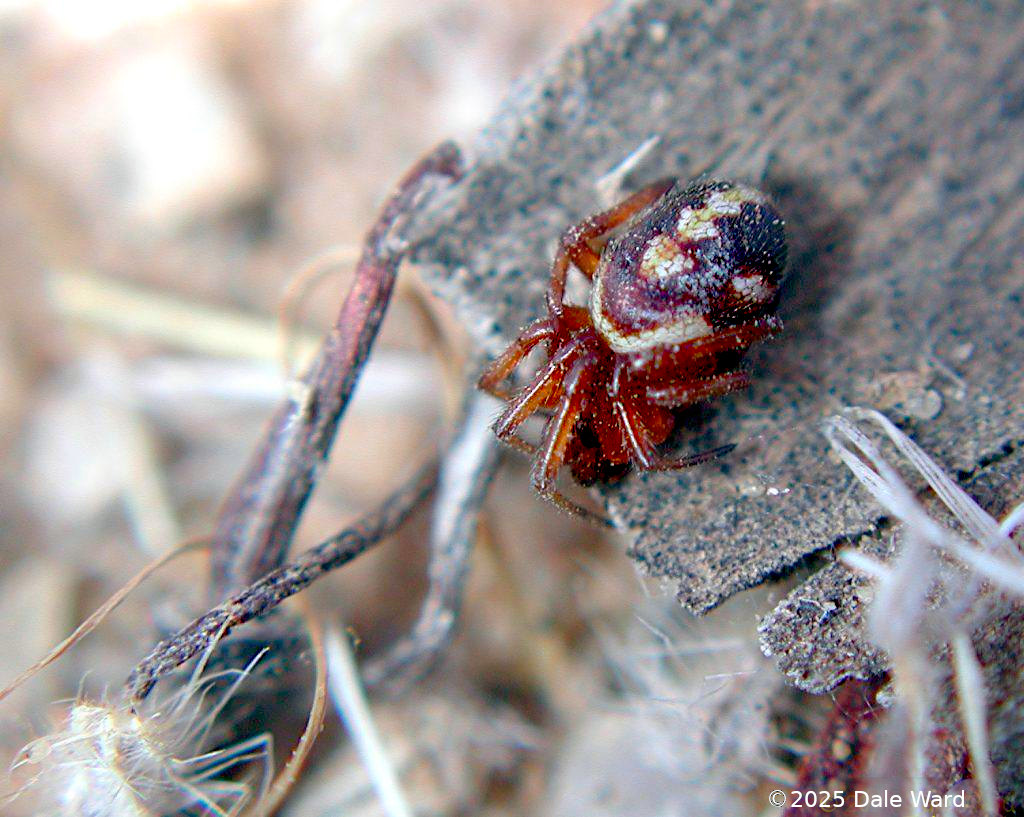 Spider sitting on a rock on the ground ‘watching’ the struggling Leafcutter Ant. He’s probably 10 inches or so away from the Leafcutter.
Spider sitting on a rock on the ground ‘watching’ the struggling Leafcutter Ant. He’s probably 10 inches or so away from the Leafcutter.
I went over to the nearby (within 5-10 feet, probably) Leafcutter nest. I was surprised to see that yet another Asagena spider had built a web in the dried vegetation above the Leafcutter nest.
This spider appeared to be a female.
There was an Acromyrmex versicolor worker trapped in that web, and the female ant was feeding on the ant. There was a second ant that was climbing up the dried vegetation.
The second ant was moving slowly, with mandibles gaped, and would stop to gnaw at the spider web as she climbed up.
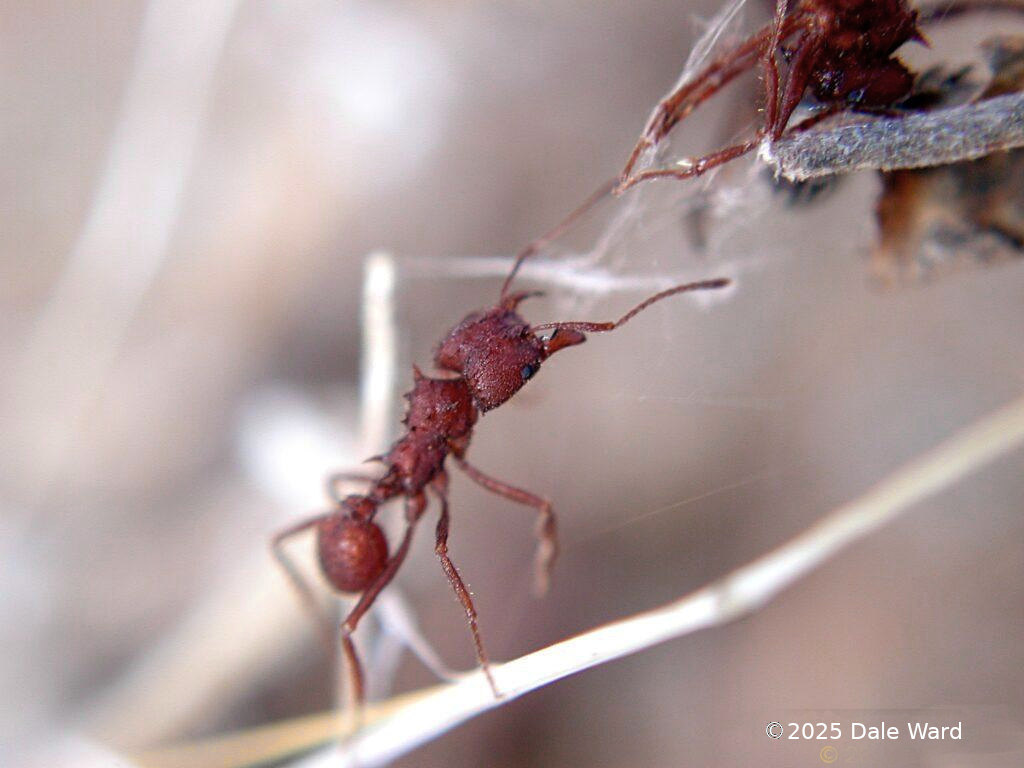 Another Leafcutter worker ant climbed up the dried vegetation where the spider was. The ant seemed to know that the spider was there. The ‘rescue worker’ ant approached the entangled ant carefully, with her mandibles gaping.
Another Leafcutter worker ant climbed up the dried vegetation where the spider was. The ant seemed to know that the spider was there. The ‘rescue worker’ ant approached the entangled ant carefully, with her mandibles gaping.
I got the impression that the ‘rescue worker’ was very aware of the presence of the spider and her web. The ‘rescue worker’ moved very, very carefully.
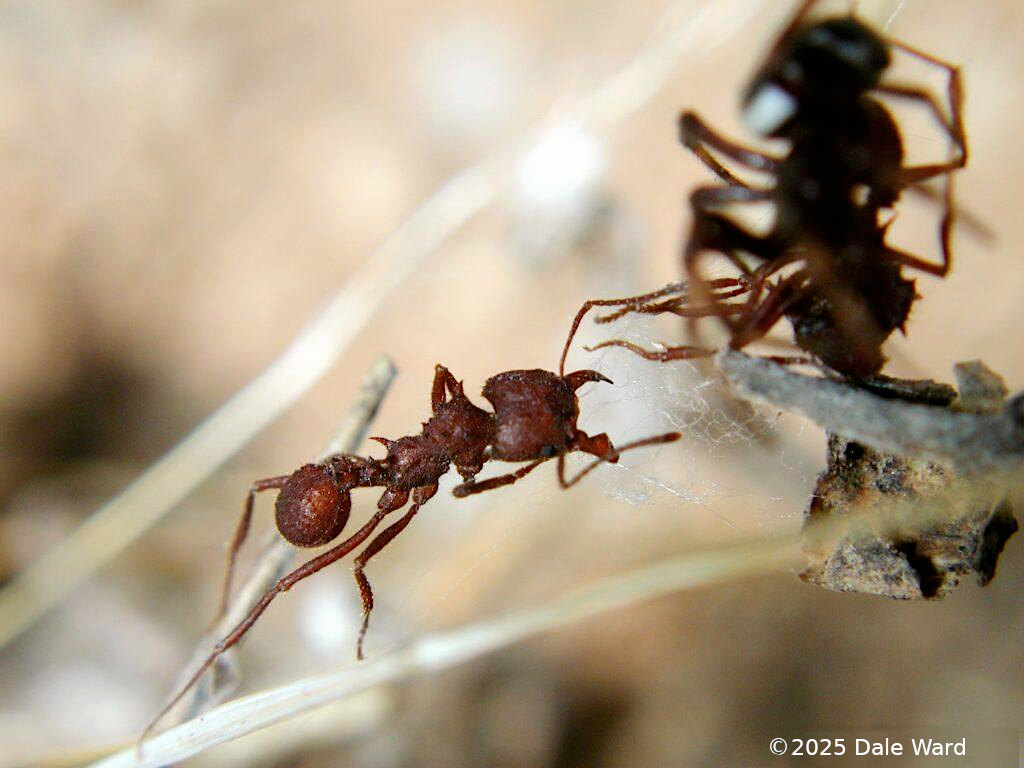 The rescuing worker ant bites at the webbing. You can see the entangled ant in the upper right of the photo, as well as the spider.
The rescuing worker ant bites at the webbing. You can see the entangled ant in the upper right of the photo, as well as the spider.
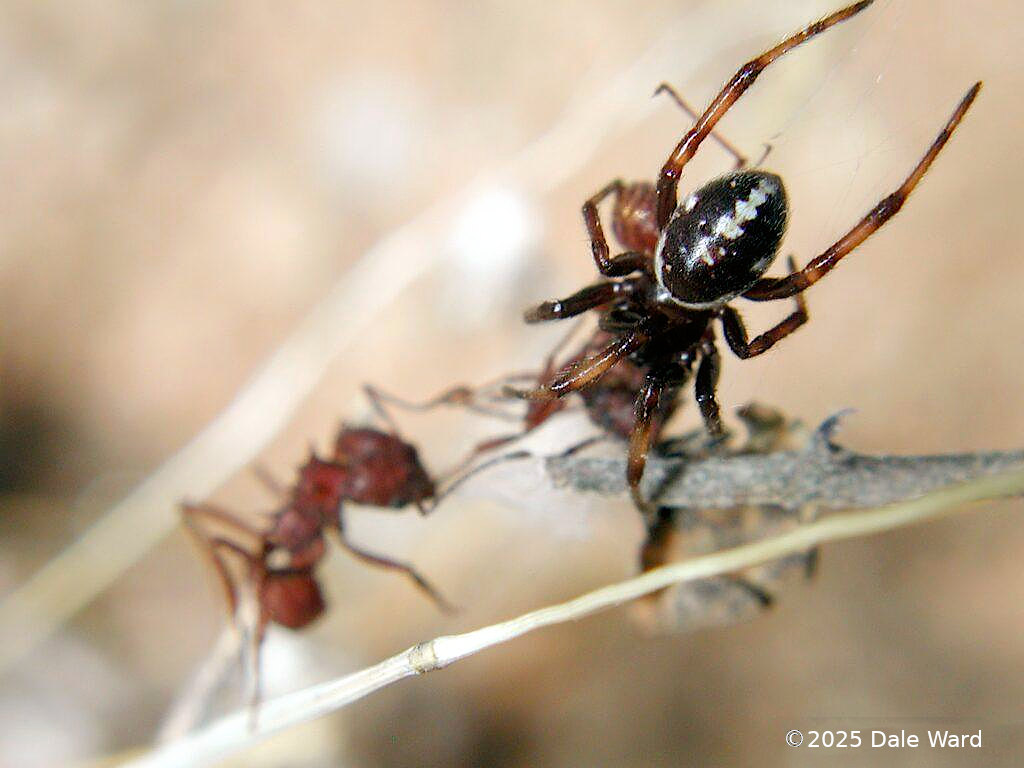 In this shot, you can see the Asagena spider on her prey - the entangled _Acromyrmex_ worker. In the lower right of the photo, the ‘rescue’ worker is biting at the spider web.
In this shot, you can see the Asagena spider on her prey - the entangled _Acromyrmex_ worker. In the lower right of the photo, the ‘rescue’ worker is biting at the spider web.
The spider seemed to be aware of the ‘rescue ant’. She’d pull her legs in as the ant approached. The spider continued feeding, though.
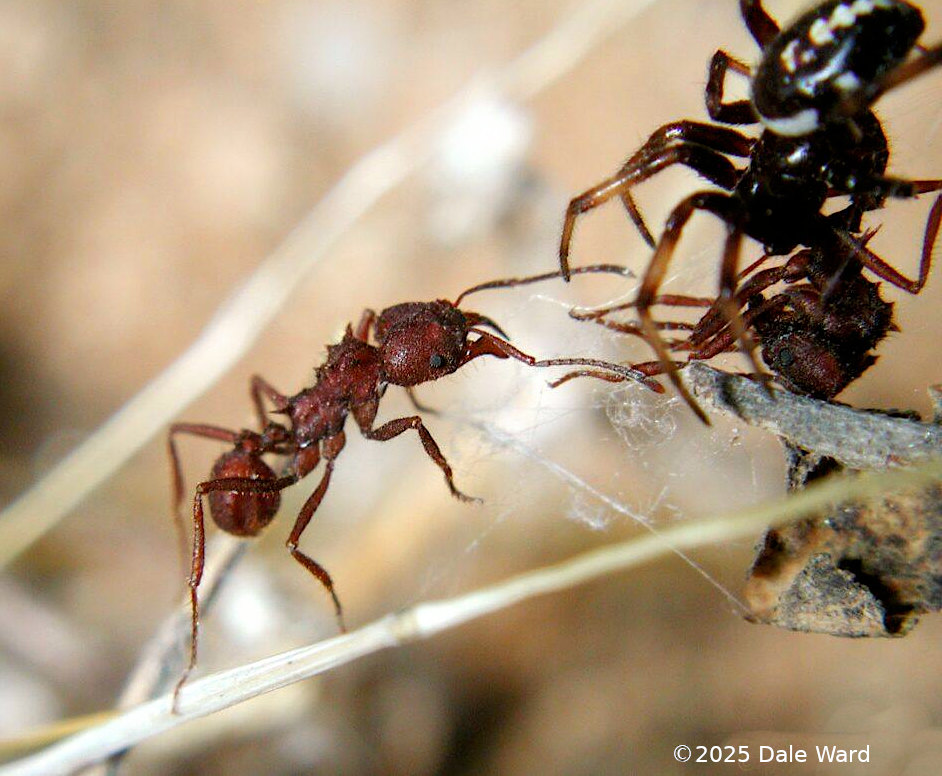 The rescue worker got closer to the spider. The ant would lunge and gape at the spider. I could not help but think that the rescue ant was playing with fire at this point. The spider, though, appears to still be feeding on the entangled worker.
The rescue worker got closer to the spider. The ant would lunge and gape at the spider. I could not help but think that the rescue ant was playing with fire at this point. The spider, though, appears to still be feeding on the entangled worker.
Eventually the spider withdrew from the trapped ant.
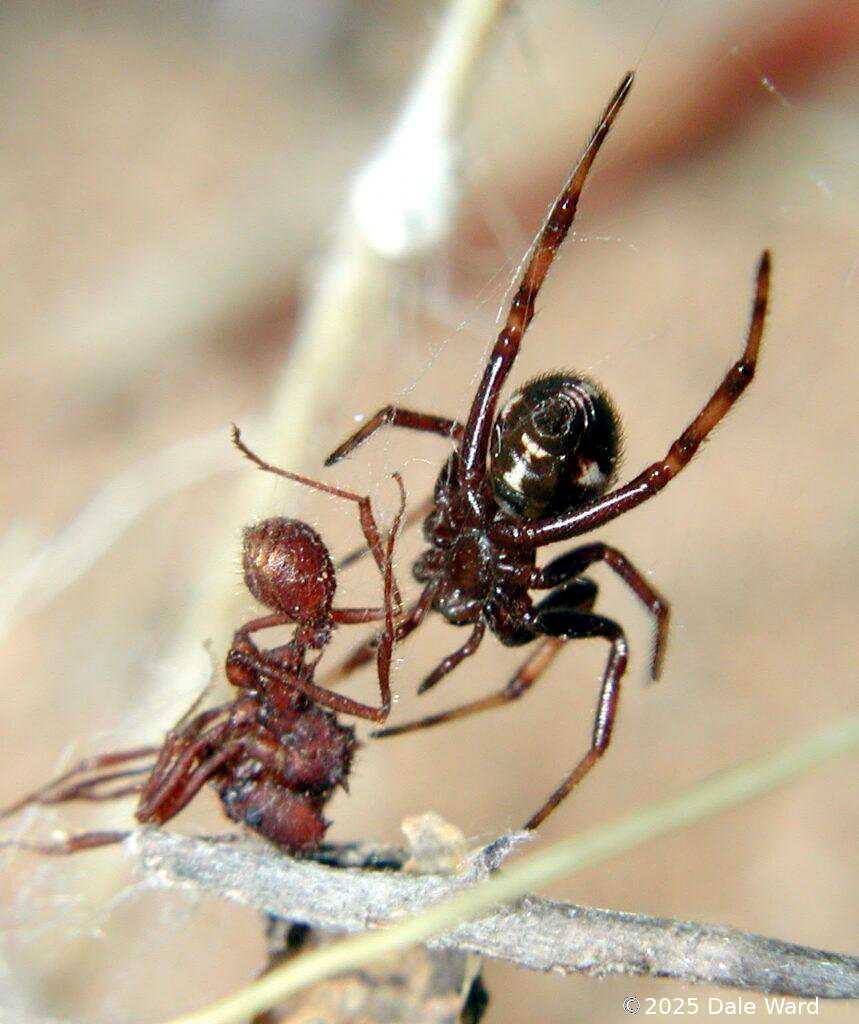 Finally, the spider did withdraw from the entangled worker for a bit. I don’t know if that’s because of the ‘rescue worker’ or not.
Finally, the spider did withdraw from the entangled worker for a bit. I don’t know if that’s because of the ‘rescue worker’ or not.
At this point, the ‘rescue worker’ retreated. She didn’t try to chase the spider, and didn’t obviously try to trim the web away from the trapped worker. I’m speculating that if the trapped worker had been alive and stridulating, the ‘rescue worker’ would have tried to free her.
Instead, the ‘rescue worker’ went back to where she had been initially and began antennating the web.
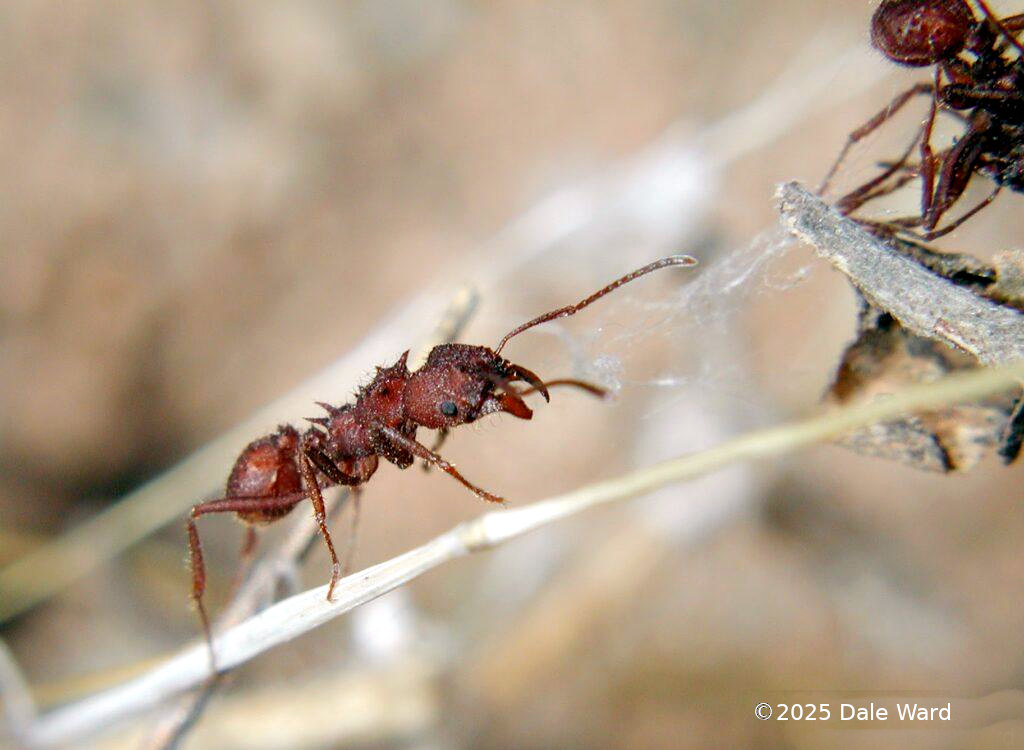 The ‘rescue worker’ went back and touched the web some more with her antennae. She didn’t seem as concerned about removing the web at this point.
The ‘rescue worker’ went back and touched the web some more with her antennae. She didn’t seem as concerned about removing the web at this point.
I think the ‘rescue worker’ ant was reacting mostly to the presence of the spider in this instance.
There are a few things about this encounter that I think are interesting.
One is the proximity of the spiders. These spiders were not obviously associating with each other, but it’s a funny coincidence to find a male and a female within 10 feet of each other, given that I would find other Acromyrmex nests that day which had no spiders. Was there something about the nest that drew the spiders, or were the spiders attracted to each others presence?
Most of the accounts I’ve read of these spiders speaks of them building webs near or over the entrance of the ant nest. In this case, the female spider’s web was at least six inches or so above the entrance to the ant nest, while the male’s web was maybe 5-10 feet away. What controls that? Was the male spider forced into a less optimal location by the presence of the female? Or was he attracted to the general location in the first place by the female?
Another interesting thing is that I’ve not read of Asagegna (Steatoda) preying on Acromyrmex. I wonder if these are the same species as the Asagena that I’d found preying on Pogonomyrmex.
And still another interesting thing - the behavior of the ‘rescue ant’. She seemed to move very carefully and slowly, seemingly quite aware of the danger she was in. She was also quite tentative about clearing the spider web away - she didn’t keep up the web-clearing after the spider left. Was it just the presence of the spider that was making the ant react this way?
I’ve said it before, and will probably say it again: what a fascinating science-fiction world we live in, populated equally by wonders and horrors.
Sources:
Bugguide.net’s Asagena Spider page
Gretsch, Willis John. 1960. The fulva group of the spider genus Steatoda (Araneae, Theridiidae). American Museum novitates ; no. 1982. American Museum Novitates. Number 1982. January 20, 1960.
Hölldobler, Bert. 1970. Steatoda fulva (Theridiidae), a Spider That Feeds on Harvester Ants. Psyche: A Jornal of Entomology 77(2).
Kwapich, Christina L. and Hölldobler, Bert. 2019. Destruction of Spiderwebs and Rescue of Ensnared Nestmates by a Granivorous Desert Ant (Veromessor pergandei). The American Naturalist. Volume 194, Number 3. September 2019.
Levi, Herbert W. 1962. The Spider Genera Steatoda and Enoplognatha in America (Aranaeae, Theridiidae). Psyche: A Journal of Entomology. 69(1).
Levi, Herbert W. 1959. Problems in the Spider Genus Steatoda (Theridiidae). Systemic Zoology. Vol. 8, No. 2 (June 1959).